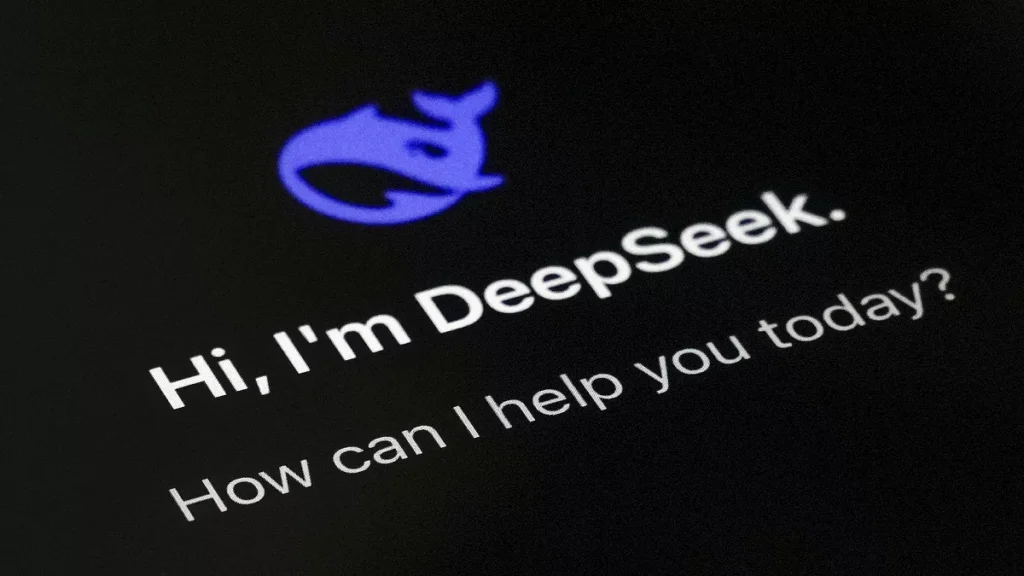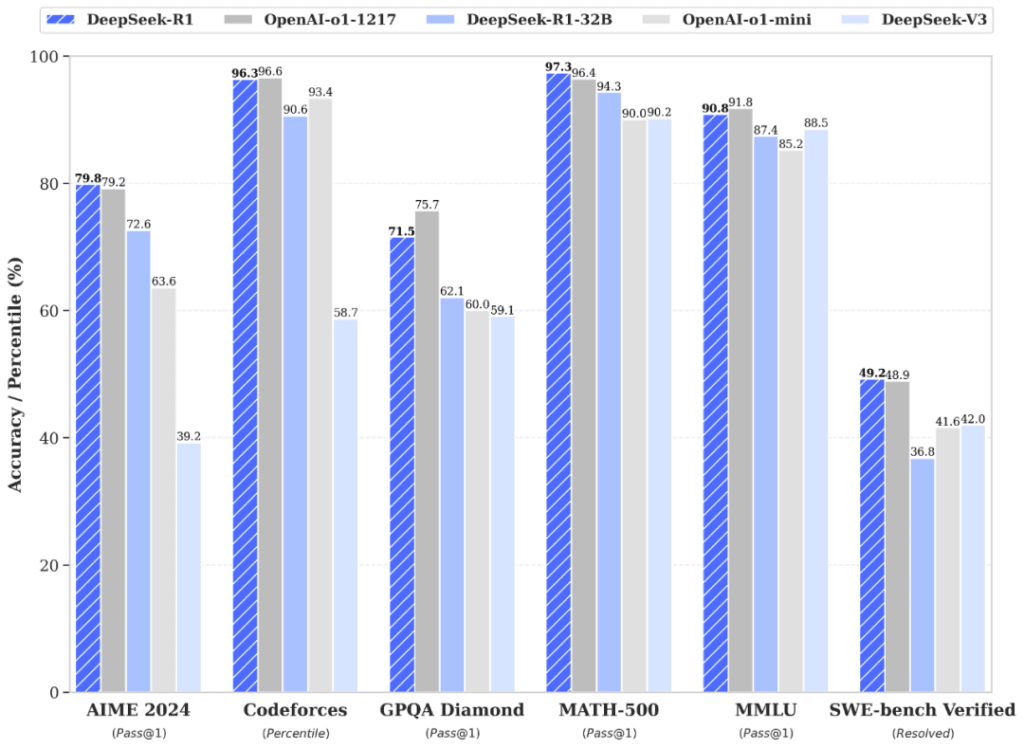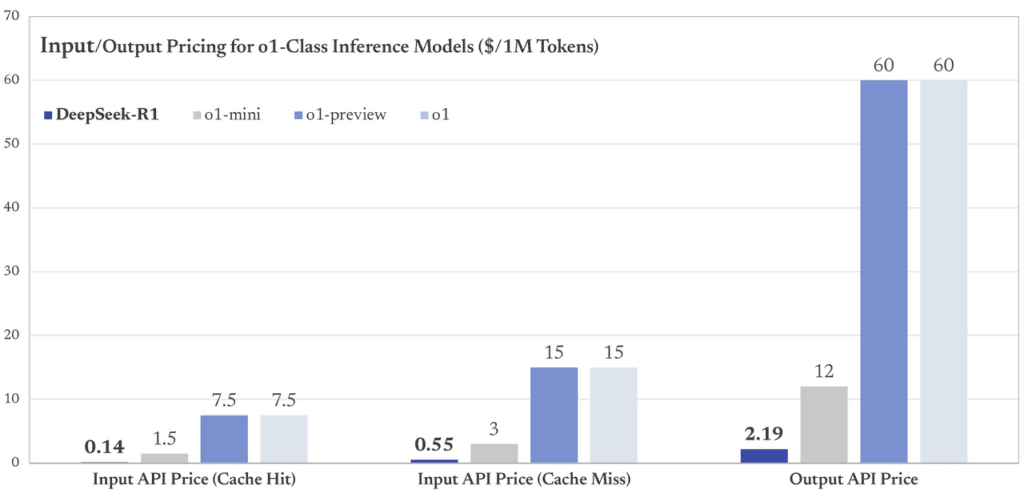The Rise of DeepSeek R1: Shaking Up the AI Landscape

In the ever-evolving world of artificial intelligence, a new player has emerged that’s causing significant waves across the global tech industry. Chinese AI firm DeepSeek recently launched its open-source R1 reasoning model, which has quickly become a strong competitor to OpenAI’s offerings. What’s particularly noteworthy is that DeepSeek’s R1 model reportedly requires significantly less financial investment and computational power compared to its rivals. This breakthrough has not only disrupted the AI sector but has also sent shockwaves through financial markets, particularly in the United States.
The DeepSeek R1 Revolution
DeepSeek’s R1 model has quickly gained attention for its impressive capabilities, which are said to be on par with ChatGPT and Claude, but at a fraction of the cost and computational requirements.

This efficiency breakthrough has several important implications:
- Cost-effectiveness: The significantly lower development and operational costs of R1 could democratize access to advanced AI technologies.
- Energy efficiency: The reduced computational power needed for R1 has implications not only for the cost of developing AI but also for the energy consumption of data centers that power AI applications. This challenges assumptions about the exponential growth in computing and energy needs for AI advancement.
- Open-source advantage: By releasing R1 as an open-source model under the MIT license, DeepSeek has made it widely accessible to developers and researchers, potentially accelerating innovation in the field.

Impact on the US Market
The emergence of DeepSeek R1 has had a profound effect on the US market, particularly in the tech and energy sectors:
- Tech sector turbulence: The launch of R1 triggered a significant sell-off in AI technology stocks. Nvidia, a key player in AI chip manufacturing, experienced its largest single-day decline in US history, losing nearly $600 billion in market capitalization. This market reaction reflects the broader implications of DeepSeek’s breakthrough for the competitive landscape in AI.
- Energy sector concerns: The energy efficiency of R1 has raised questions about future power demands for AI applications. Companies like Constellation Energy, which had been planning significant capacity expansions for AI, saw their stock prices plummet. While data centers and electrification trends are still expected to drive growth, market expectations may have been overly optimistic.
- Reevaluation of AI strategies: The cost-effective AI training and inference offered by R1 have led to a reassessment of the high valuations of many tech stocks, particularly among the so-called Magnificent Seven. This development suggests that China has not only narrowed the gap with the United States in AI technology but could potentially surpass it in some areas.
The French Market: A Different Story
While the US market experienced significant turbulence in response to DeepSeek R1, the impact on the French market has been notably less pronounced. Several factors contribute to this difference:
- Different market composition: The French tech sector is smaller and less dominated by AI giants compared to the US, resulting in less dramatic market reactions.
- European AI initiatives: The European Union has been actively promoting its own AI development strategies, which may have insulated the French market to some extent from external disruptions.
- Focus on ethical AI: European companies, including those in France, often emphasize responsible and ethical AI development, which may make them less susceptible to market fluctuations based solely on performance metrics.
Mistral AI: France’s Contender in the AI Race
While DeepSeek has been making headlines, French AI company Mistral AI has been quietly but steadily advancing its position in the global AI landscape. Mistral’s strategy focuses on developing open-source models that address current market shortcomings. By utilizing high-quality data and cutting-edge training methodologies, Mistral aims to not just meet but exceed the capabilities of established benchmarks like ChatGPT 3.5.
Here’s how Mistral is working to stay competitive:
- Efficiency-focused development: Mistral is creating small, super-efficient models while prioritizing data control. This approach enhances both the quality and safety of their AI offerings, making them more attractive for business applications.
- Strategic partnerships: Mistral is forming strategic European partnerships and tailoring models for specific industries like finance, law, and manufacturing. This targeted approach allows them to address diverse needs in the AI arena.
- Open-source commitment: By focusing on open, auditable models and European data sovereignty, Mistral is positioning itself as a leader in responsible AI development. This approach not only addresses geopolitical concerns but also aligns with European values and standards.
- Continuous innovation: Mistral’s roadmap includes developing a family of generative models with both text and visual outputs, focusing on high-quality, specialized data sources. They aim to establish a strong market presence by Q2 2024, offering scalable APIs and forming strategic commercial relationships.
The Road Ahead
The rise of DeepSeek R1 and the ongoing efforts of companies like Mistral AI highlight the dynamic and competitive nature of the global AI landscape. While the US market has experienced significant disruption, the more measured response in France and Europe suggests a different approach to AI development and adoption.
As the AI race continues, it’s clear that factors such as cost-effectiveness, energy efficiency, and ethical considerations will play crucial roles in determining market leaders. The success of open-source models like DeepSeek R1 may lead to a more democratized AI ecosystem, potentially shifting the balance of power in the tech industry.
For companies like Mistral AI, the challenge lies in leveraging their unique strengths – such as a focus on efficiency, ethical development, and European values – to carve out a significant place in the global AI market. As the industry evolves, it will be fascinating to see how different approaches and regional strategies shape the future of artificial intelligence.
In conclusion, the emergence of DeepSeek R1 has undoubtedly shaken up the AI landscape, particularly in the US. However, the more nuanced impact on markets like France demonstrates that there’s room for diverse approaches in AI development. As we move forward, the ability to balance innovation, efficiency, and ethical considerations will likely determine which players lead the next phase of the AI revolution.



